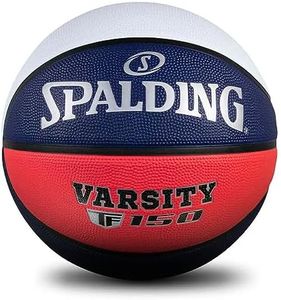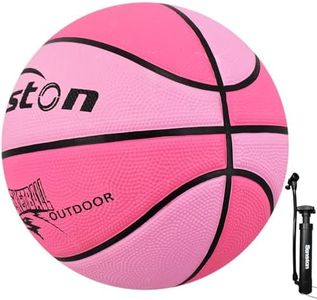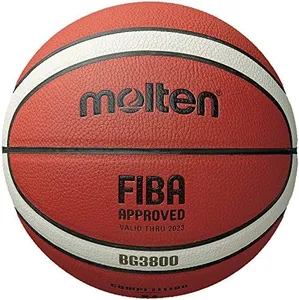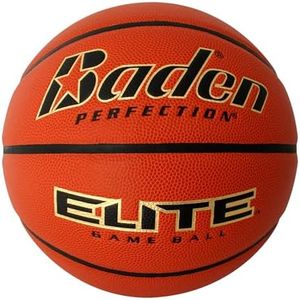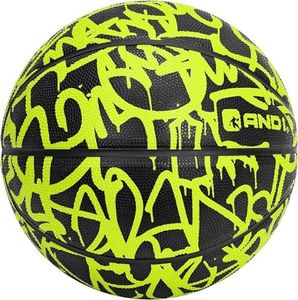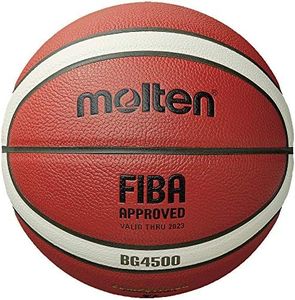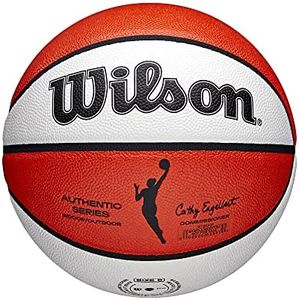We Use CookiesWe use cookies to enhance the security, performance,
functionality and for analytical and promotional activities. By continuing to browse this site you
are agreeing to our privacy policy
10 Best Indoor Outdoor Basketballs
From leading brands and best sellers available on the web.Buying Guide for the Best Indoor Outdoor Basketballs
When shopping for an indoor-outdoor basketball, it's important to consider where you'll be playing most often, how often you play, and your personal preferences regarding grip and feel. Indoor-outdoor basketballs are made to handle both smooth indoor courts and rough outdoor surfaces, but not all basketballs are created equal. Knowing what features to look for can help you find a ball that suits your playing environment, feels great in your hands, and lasts longer.MaterialThe material of a basketball affects its grip, bounce, durability, and feel. Indoor-outdoor basketballs are typically made from composite leather or rubber. Composite leather offers a softer feel and better grip, more like what you’d find with professional indoor basketballs, but it still holds up pretty well on outdoor surfaces. Rubber basketballs are more durable on concrete and asphalt and are a good choice if you play mostly outdoors, but they can feel harder and sometimes a bit slippery on indoor courts. When picking, consider where you’ll spend most of your time playing: if you split time or want the best of both worlds, composite is a popular choice.
Grip & TextureGrip is all about how easily the ball sticks to your hand, which affects your control during shots and dribbling. The texture refers to the pebbled pattern on the basketball’s surface, and the depth of the channels between panels also matters. Balls with a deeper texture and wide channels tend to offer better grip, especially if your hands get sweaty or you’re playing outside where the ball can get dirty. If you prefer a smoother, softer feel, you may like a ball with less aggressive texture, but if you want maximum control, look for a ball with a grippy, heavily textured surface.
SizeBasketballs come in various sizes, most commonly Size 7 (29.5 inches, official men’s size), Size 6 (28.5 inches, official women’s size or boys ages 12-14), and Size 5 (27.5 inches, kids). Choosing the right size ensures a comfortable grip and better control. Pick the size that matches your age group or league requirements, or just feel which fits your hands best if you play for fun.
Bounce ConsistencyBounce refers to how well the ball rebounds off the floor. Consistent, reliable bounce helps with dribbling and shooting. Good indoor-outdoor basketballs stay lively and bounce evenly on both wood and concrete. Some cheaper balls lose air quickly or develop dead spots, so check for reviews about how a ball holds its bounce over time. If you play many intense games, choose a ball known for retaining its bounce after extended use.
DurabilityDurability is crucial if you play outdoors, as rough surfaces can wear down basketballs faster. Indoor-outdoor balls are reinforced to handle tougher conditions, but some materials and brands last longer than others. Consider how often and where you play; if you play mainly outdoors, prioritize durability. If you alternate, look for a basketball that mentions long-lasting performance for both surfaces.
Feel and WeightThe way a basketball feels—softness or firmness, lightness or heaviness—can affect your enjoyment and performance. Some players like a firm, heavier ball for outdoor play, while others prefer a softer feel similar to high-end indoor balls. Try bouncing or handling different balls if you can, and see which feels most comfortable in your hand and during dribbling. The right feel should make you want to keep playing.
